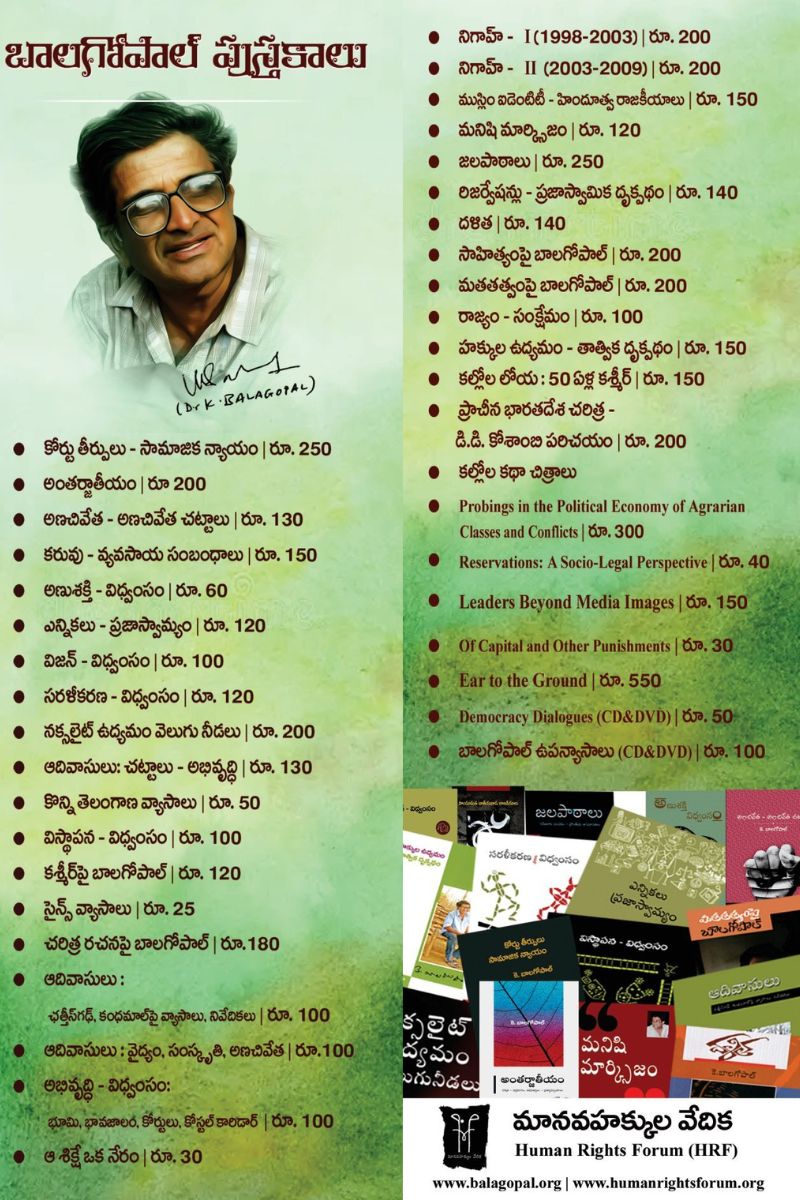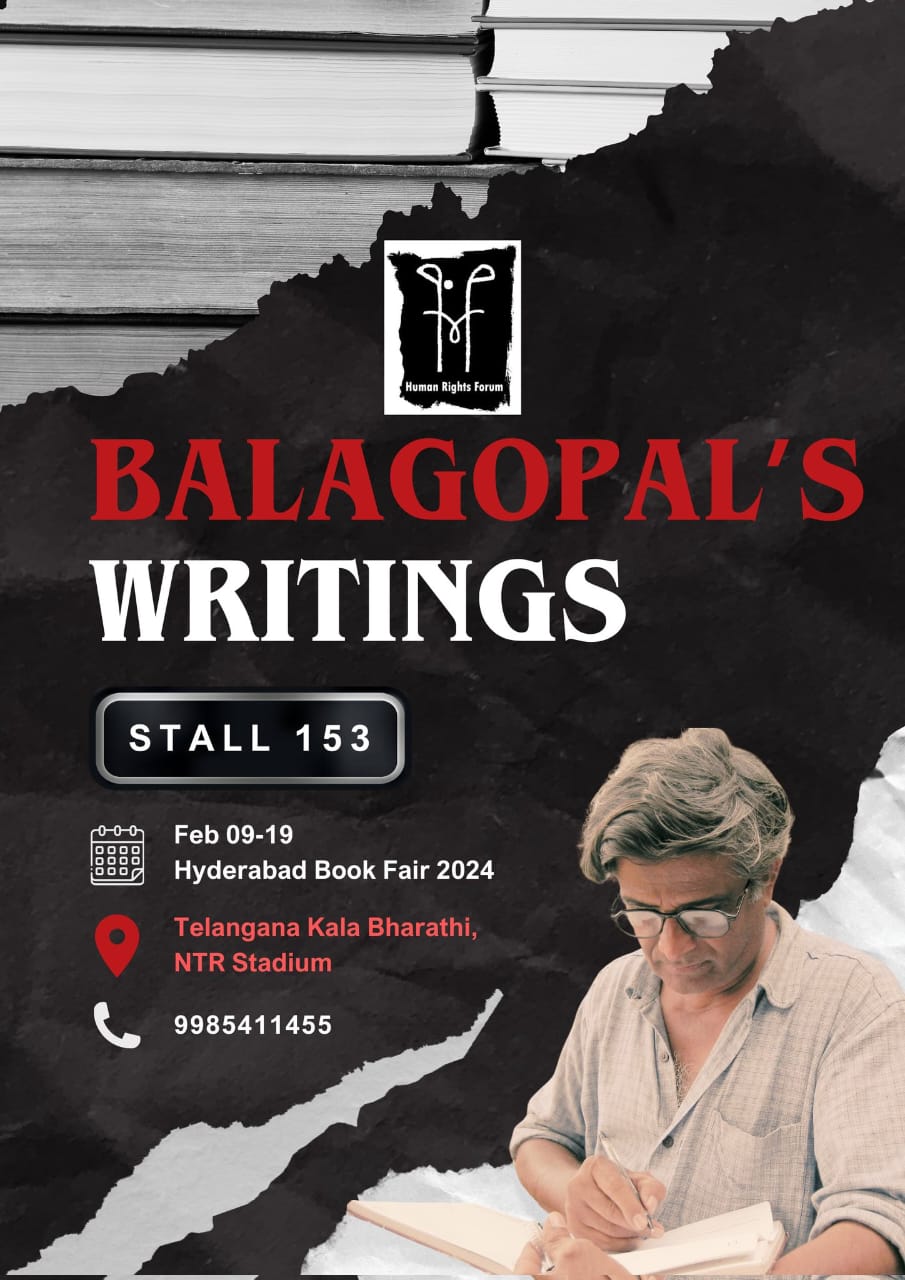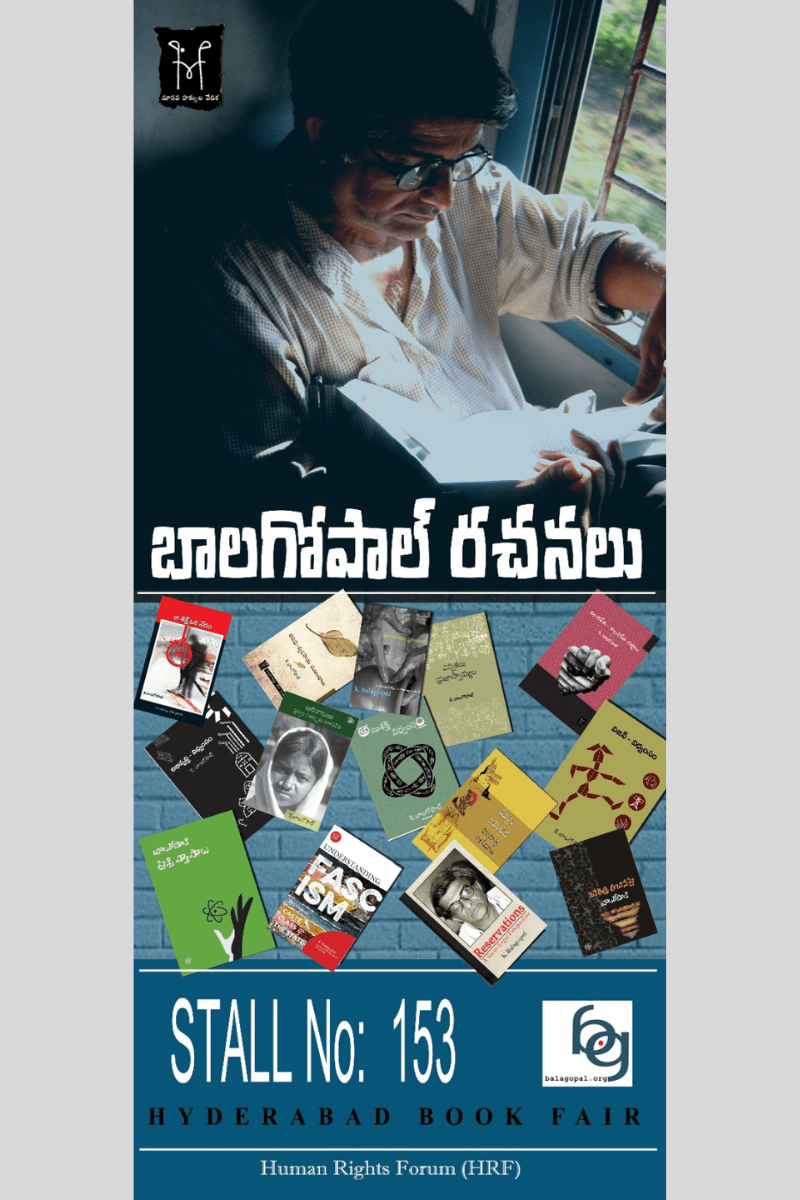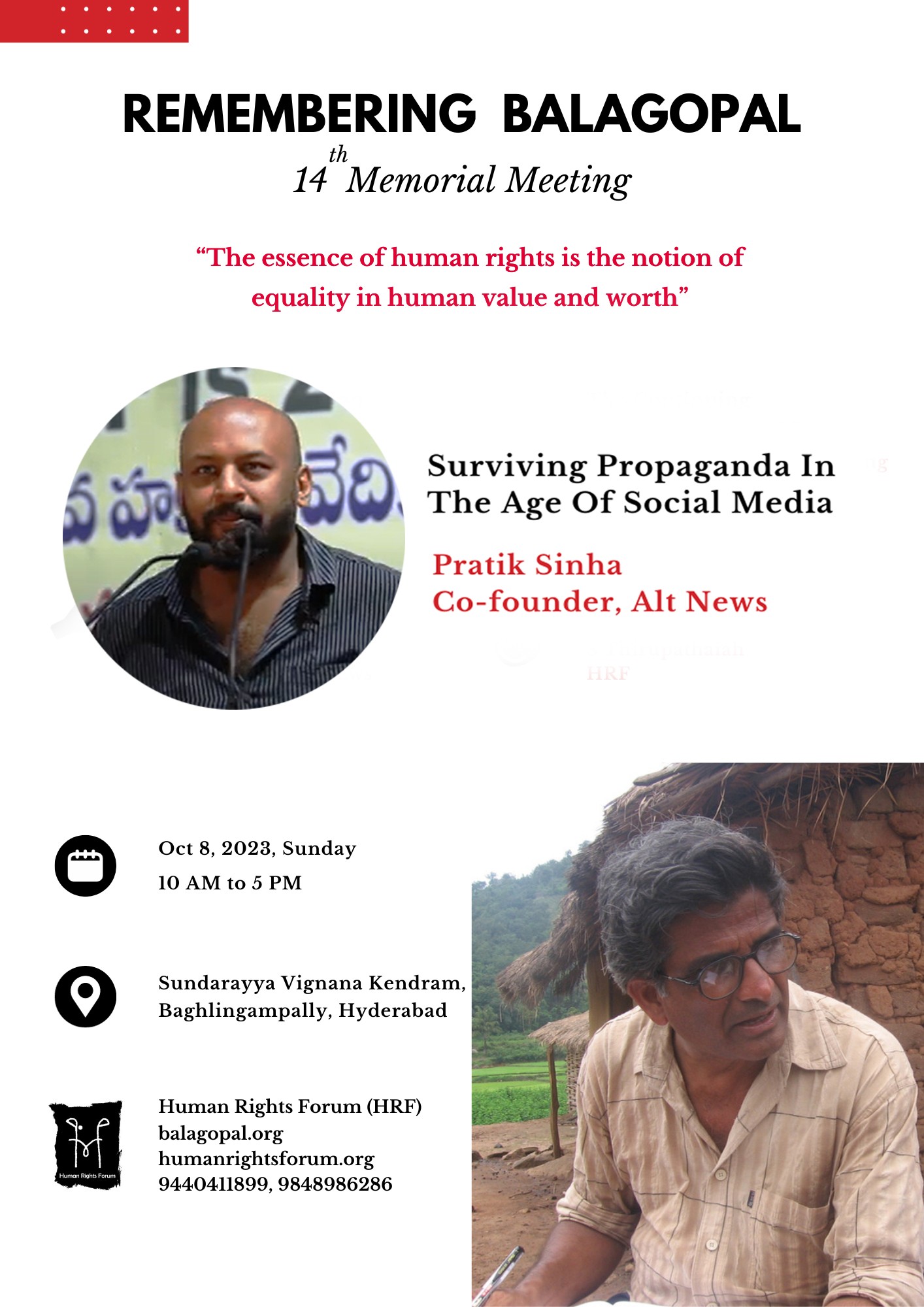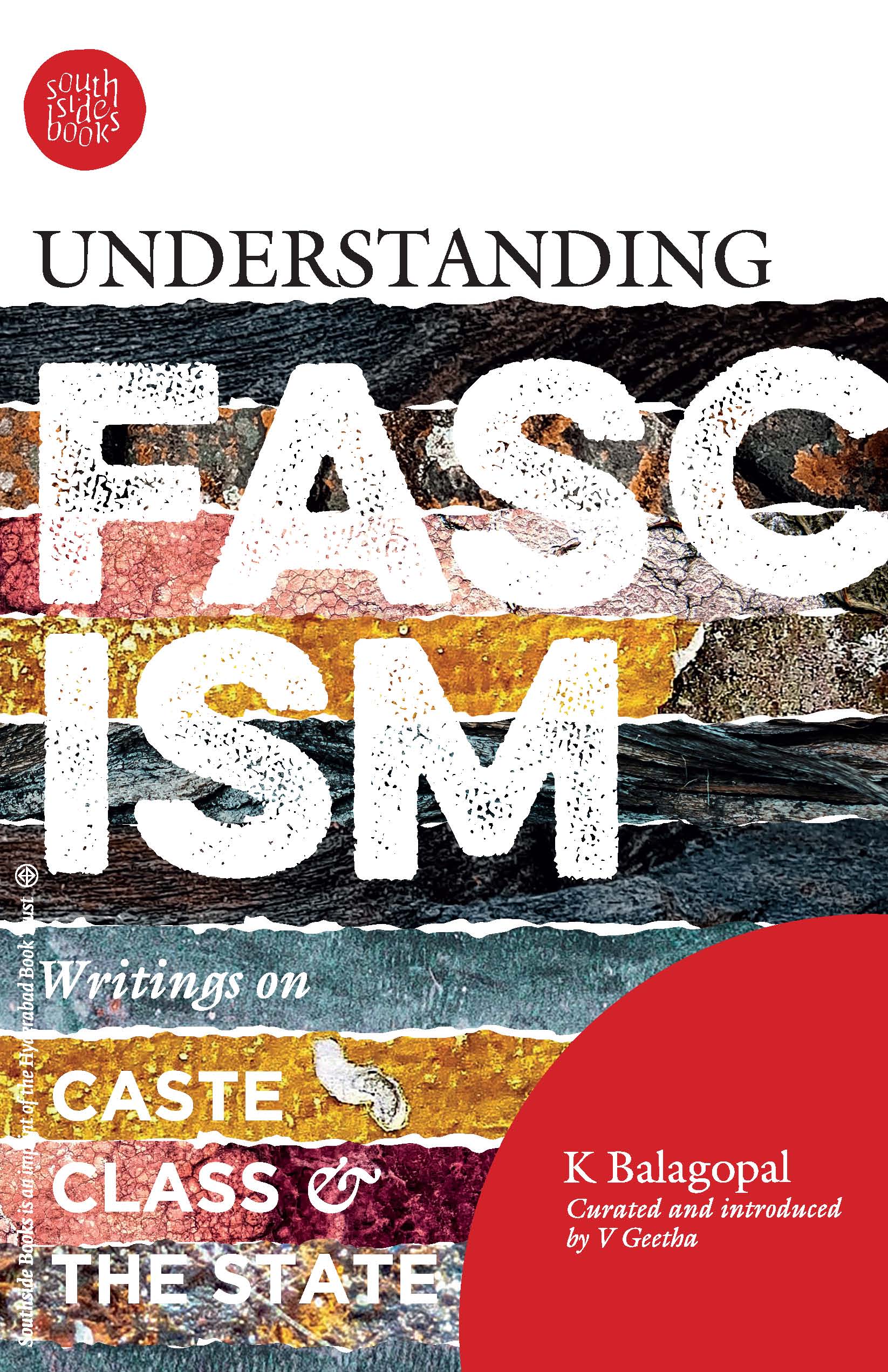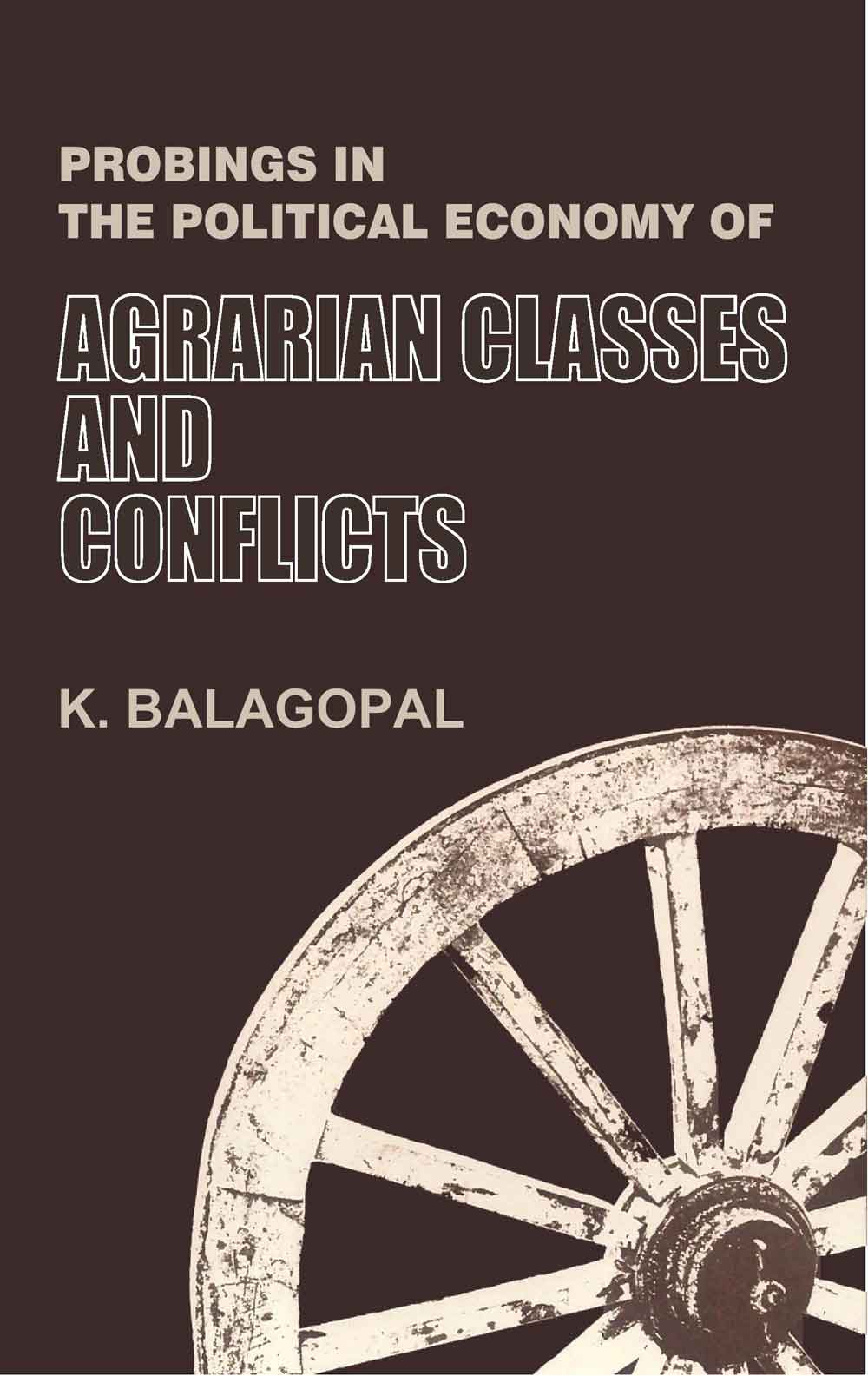K. Balagopal was a civil rights activist and left-wing intellectual who was mainly active in Andhra Pradesh from the 1980s until his death in 2009. In the nineties, he became increasingly critical of the People’s War Group, with which he had been associated, and developed those criticisms at length in a famous Telugu essay called The Darker Side of the Naxalite Movement (Cheekati Konalu).
The 16 essays and articles in this collection straddle the period from 1985 to 2003. Those were years that saw growing caste violence against the rural poor, strident middle-class campaigns against reservation, the consolidation of the Rashtriya Swayamsevak Sangh (RSS) as a mass political force working to transform India into a “Hindu state”, and a steady increase in state authoritarianism.

K. Balagopal, Understanding Fascism: Writings on Caste, Class and the State,
Curated and introduced by V. Geetha.
South Side Books, Hyderabad (2023).
Caste, communalism and India’s increasingly authoritarian state, therefore, seem like the natural rubrics under which to organise the articles and this is what editor V. Geetha has done. With a final exception, Balagopal’s endorsement of Communalism Combat, all of the articles were published in Economic and Political Weekly.
The pattern of caste violence described by Balagopal in the first two articles contains features which are worth highlighting: the atrocities occurred in the economically advanced coastal districts of Andhra where Kammas are the dominant agrarian community; the violence targeted Madigas and Malas, landless communities who work as farm servants and agricultural labourers; politically, the landed classes backed the Telugu Desam and its allies on the left and far right, while the Dalits supported Congress (I); in Karamchedu in July 1985 a 3000-strong mob of caste Hindus (viz. Kammas) assaulted the Madigas en masse; women were dragged out of their homes, stripped and molested or raped; at Chundur the police were “mute spectators” to the massacre that occurred in August 1991; and most importantly, the Malas and Madigas of the coastal districts “are better educated, assertive and identity-conscious than other Dalit communities there or elsewhere”. “The younger generation has started rejecting the social and political subordination to the forward castes that has traditionally been the lot of the Dalits…It is this…assertiveness of the Malas and Madigas that the forward castes find so intolerable, leading to assaults such as Karamchedu and Chundur” (p.23).
Moreover, by the ’90s Balagopal had come around to the view that “trying to convince the lower middle class and middle class savarna farmers that their material interest lies in a class unity with Dalits, is a fruitless and pedantic solution”.
Turning to the issue of reservation, Balagopal surmised in 1986 that well over half of Andhra’s population consisted of the so-called Backward Castes (BCs). So when a commission appointed in 1982 eventually recommended that the state’s backward caste reservation share should be raised from 25% to 44% (assuming that 8% of those castes could fend for themselves in their competition with the forward castes), this sparked outrage among the forward castes.
Of course, “outrage” of this sort is never spontaneous and has to be contrived or conjured, and it was the Bharatiya Janata Party (BJP) that used the anti-reservation campaigns, both here and in Gujarat, to build a base among the urban middle class. Students in the Akhil Bharatiya Vidya Parishad (ABVP) constituted the bulk of the anti-reservation agitators in Andhra, with their base in the medical and engineering colleges.
The landed upper caste families these students came from had, by now (mid eighties), coalesced into a “new rich Provincial Propertied Class”. This new provincial bourgeoisie was far better organised than the backward castes because the forward castes of which it was made up were more widely spread across the state and used their extensive caste links to mobilise their lower middle-class caste-fellows as the mass base of vociferous resistance to affirmative action. “Foot soldiers of fascism” was how Balagopal described the latter in probably his earliest reference to this.
Four years later, an article titled This Anti-Mandal Mania saw reservations as so threatening because they attacked the caste system. “Caste is juridically dead, but very much alive politically and ideologically…Tickets to the Assembly or Parliament at election time, public works and excise contracts, co-operative loans, industrial licenses, supply contracts, managerial jobs in the private sector…not one of these is obtained without the use of caste” (p.58). Caste, Balagopal argued, was a mode of reproduction of India’s ruling class, an “unwritten reservation that the forward castes enjoy in the form of “connections”” and incomparably more powerful than any of Mandal’s recommendations (p.59). But of course “the casteism of the forward castes is never seen as casteism”. Balagopal used this analysis of the functionality of caste to the governance of class relations to defend the sort of identity politics that would emerge in the 1990s. “It remains…the political duty of the poor and the deprived to use their caste identity in the struggle for their liberation”. Caste and class struggles were “closely interwoven and coterminous struggles” (p.63).
Of the five essays that confront “Hindutva” in part two of the book, much of the focus is on the Indian lower-middle class. The cult of Ayyappa, “the latest mass-god of Hinduism”, was grounded socially in a growing lower middle class whose insecurities, Balagopal sensed, were fuelling all manner of reactions, from the proliferation of cults “outside” the establishment to the rise of mafias and gangsterism in the towns.
Balagopal was a prescient writer and anticipated the way these various rebellions could be absorbed and reintegrated in the groundswell of what this article describes (in 1989) as “emerging fascist trends” and “developing fascism”. He referred to cults such as that at Sabarimalai being appropriated for “communal purposes”, to the influx of agrarian wealth into Vijaywada creating a fertile basis for the operation of mafias in real estate and finance, and to the class hatred unleashed by the “vulgar new rich of coastal Andhra”, with the trail of anti-Kamma violence left behind by riots in that port city. And the eighties saw a proliferation of repressive laws that only reinforced the “gradual demise of every one of the institutions of bourgeois democracy” (p.93).
Balagopal’s 1993 piece on the demolition of the Babri Masjid is probably where his conception of the nature of Indian fascism comes through most clearly. This was where he argued that Hindutva “has its origin in a political need to counter aspirations for democracy” . Its mass base was constructed out of the “resentment and frustration born in reaction to the space conquered by the oppressed and the underprivileged in India’s political universe”.
Although he insisted that there was no revolution going on in India to warrant describing Hindutva as a “counter-revolution”, he pointed out that “there has been a tremendous expansion of democratic and egalitarian aspirations among the oppressed people”. In other words, if democracy’s right arm was fettered to a state apparatus that thrived on a culture of repression, its constitutional left arm allowed for a culture of freedom that nurtured aspirations for equality, justice and self-respect among the mass of working people.
If Hindutva was nonetheless capable of attracting “significant support” at the “middle and lower levels of society”, this, Balagopal suggested, was because society was characterised by a pervasive sense of hierarchy more than it was by any simple bipolarity, for example, “The smallest farmer thinks he is superior to the wage labourer”, and the BJP was adept at making this sense of hierarchy (recursive inequalities) a source of resentment at the alleged “pampering” of workers, women, untouchables, Muslims and so on. Whatever one thinks of this explanation, by 2002 it was not resentment but outright hatred that loomed large in Balaglopal’s analysis of communalism.
“The common Hindu’s hatred for anything to do with Muslims…is the only thing alive in Gujarat today”, he wrote in June that year. Indeed, “a very large number of Hindus all over the country harbour an extraordinary hatred for Muslims”. Balagopal’s reflections on the ghastly pogroms that tore through Gujarat in 2002 are an extraordinary piece of writing – not just for the rawness of the emotion expressed there but because, to his credit, he was willing to confront what he called “uncomfortable questions”.
“The participation of Adivasis and Dalits in the rioting, looting and killing is one such [question]…In all the areas along the north-eastern border of the State…there was sizeable participation of Adivasis along with non-Adivasis in the violence. The two were part of the same mob in most cases”. So too with Dalits. “Dalit participation in the violence at Ahmedabad is even less ambiguous. A large number of Dalit youth took direct part in the gruesome violence of that city”.
This was a frontal challenge to the unrestrained defence of identity politics he had advocated as late as 1990, and to essentialist constructions of “the” Advasi and “the” Dalit. The manipulation of identities is of course the heart of fascist politics and Balagopal knew that the “participation” of these communities in the pogroms had everything to do with the organising drives of the Sangh parivar. “The Vanavasi Kalyan Samiti of the Vishwa Hindu Parishad has made considerable inroads into the Adivasi areas…every Adivasi village has at least one VHP activist”. The Adivasis are “made to feel that they are Hindus”.
The collection ends with Balagopal’s scathing critique of the ineluctable ways in which the once beating heart of India’s democracy has been progressively stifled by a slew of laws and repressive practices that have systematically undermined the rights of individuals under the Indian constitution. “The terror emanating from minorities alone is depicted as terror”, he wrote about both TADA and the Law Commission’s replication of its political and communal biases.
So how do we blend these different strands of the argument into a coherent idea of Indian fascism? The conception that best captures what Balagopal was driving at is Marcuse’s notion of fascism as a “preventive counterrevolution”. Alberto Toscano has foregrounded this in a fascinating chapter of his recent book Late Fascism (Verso, 2023). All of the moments that Marcuse listed in a 1970 interview with Hans Magnus Enzensberger as markers of an incipient fascism in the US – “the gradual or rapid abolition of the remnants of the constitutional state…granting the police extraordinary legal powers…the court decisions of recent years”, and “the almost direct censorship of the press, television and radio” – all of these have been pivotal moments in India’s political transformation since the 1980s. The point of this unlikely comparison is not the analogy, but the insight it offers in suggesting that like the US (or Israel for that matter), India has its own version(s) of “racialised state terror” and this or these versions is where we have to start in trying to “understand fascism” in India.
Viewed in this light, Balagopal’s essays and the editor’s work in putting them together in this way become seminal contributions to grasping the nature of fascism in India.


